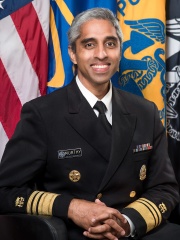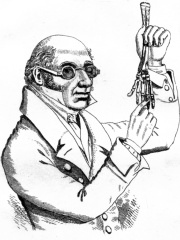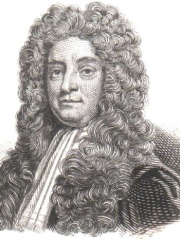
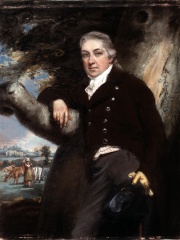
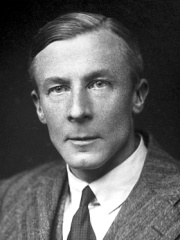
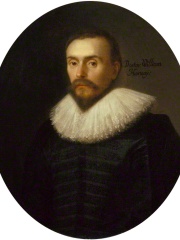
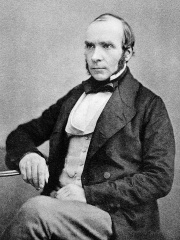
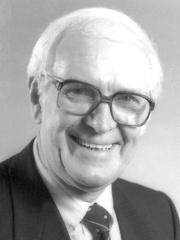
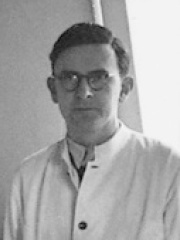
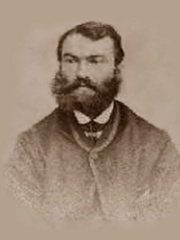
The Most Famous
PHYSICIANS from United Kingdom
This page contains a list of the greatest British Physicians. The pantheon dataset contains 726 Physicians, 71 of which were born in United Kingdom. This makes United Kingdom the birth place of the 3rd most number of Physicians behind United States, and Germany.
Top 10
The following people are considered by Pantheon to be the top 10 most legendary British Physicians of all time. This list of famous British Physicians is sorted by HPI (Historical Popularity Index), a metric that aggregates information on a biography's online popularity. Visit the rankings page to view the entire list of British Physicians.

1. Joseph Lister (1827 - 1912)
With an HPI of 81.46, Joseph Lister is the most famous British Physician. His biography has been translated into 73 different languages on wikipedia.
Joseph Lister, 1st Baron Lister, (5 April 1827 – 10 February 1912) was an English surgeon, medical scientist, experimental pathologist and pioneer of antiseptic surgery and preventive healthcare. Lister revolutionised the craft of surgery by the use of close anatomical observation, in the same manner that John Hunter revolutionised the science of surgery. From a technical viewpoint, Lister was not an exceptional surgeon, but his research into bacteriology and infection in wounds revolutionised surgery throughout the world. Lister's contributions were four-fold. Firstly, as a surgeon at the Glasgow Royal Infirmary, he introduced carbolic acid (modern-day phenol) as a steriliser for surgical instruments, patients' skins, sutures, surgeons' hands, and wards, promoting the principle of antiseptics. Secondly, he researched the role of inflammation and tissue perfusion in the healing of wounds. Thirdly, he advanced diagnostic science by analysing specimens using microscopes. Fourthly, he devised strategies to increase the chances of survival after surgery. His most important contribution, however, was recognising that putrefaction in wounds is caused by germs, in connection to Louis Pasteur's then-novel germ theory of fermentation. Lister's work led to a reduction in post-operative infections and made surgery safer for patients, leading to him being distinguished as the "father of modern surgery".

2. Edward Jenner (1749 - 1823)
With an HPI of 81.13, Edward Jenner is the 2nd most famous British Physician. His biography has been translated into 100 different languages.
Edward Jenner (17 May 1749 – 26 January 1823) was an English physician and scientist who pioneered the concept of vaccines and created the smallpox vaccine, the world's first vaccine. The terms vaccine and vaccination are derived from Variolae vaccinae ('pustules of the cow'), the term devised by Jenner to denote cowpox. He used it in 1798 in the title of his Inquiry into the Variolae vaccinae known as the Cow Pox, in which he described the protective effect of cowpox against smallpox. Jenner is often called "the father of immunology", and his work is said to have saved "more lives than any other man". In Jenner's time, smallpox killed around 10% of the global population, with the number as high as 20% in towns and cities where infection spread more easily. In 1821, he was appointed physician to King George IV, and was also made mayor of Berkeley and justice of the peace. He was a member of the Royal Society. In the field of zoology, he was among the first modern scholars to describe the brood parasitism of the cuckoo (Aristotle also noted this behaviour in his History of Animals). In 2002, Jenner was named in the BBC's list of the 100 Greatest Britons.

3. Edgar Adrian (1889 - 1977)
With an HPI of 80.05, Edgar Adrian is the 3rd most famous British Physician. His biography has been translated into 60 different languages.
Edgar Douglas Adrian, 1st Baron Adrian (30 November 1889 – 4 August 1977) was an English electrophysiologist and recipient of the 1932 Nobel Prize for Physiology, won jointly with Sir Charles Sherrington for work on the function of neurons. He provided experimental evidence for the all-or-none law of nerves.

4. William Harvey (1578 - 1657)
With an HPI of 79.40, William Harvey is the 4th most famous British Physician. His biography has been translated into 81 different languages.
William Harvey (1 April 1578 – 3 June 1657) was an English physician who made influential contributions to anatomy and physiology. He was the first known physician to describe completely, and in detail, pulmonary and systemic circulation as well as the specific process of blood being pumped to the brain and the rest of the body by the heart (though earlier writers, such as Realdo Colombo, Michael Servetus, and Jacques Dubois, had provided precursors to some of his theories).
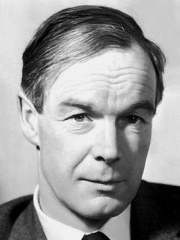
5. Alan Hodgkin (1914 - 1998)
With an HPI of 78.08, Alan Hodgkin is the 5th most famous British Physician. His biography has been translated into 57 different languages.
Sir Alan Lloyd Hodgkin (5 February 1914 – 20 December 1998) was a British physiologist and biophysicist who shared the 1963 Nobel Prize in Physiology or Medicine with Andrew Huxley and John Eccles.

6. John Snow (1813 - 1858)
With an HPI of 76.33, John Snow is the 6th most famous British Physician. His biography has been translated into 39 different languages.
John Snow (15 March 1813 – 16 June 1858) was an English physician and a leader in the development of anaesthesia and medical hygiene. He is considered one of the founders of modern epidemiology and early germ theory, in part because of his work in tracing the source of a cholera outbreak in London's Soho, which he identified as a particular public water pump. Snow's findings inspired fundamental changes in the water and waste systems of London, which led to similar changes in other cities, and a significant improvement in general public health around the world.

7. James Black (1924 - 2010)
With an HPI of 75.70, James Black is the 7th most famous British Physician. His biography has been translated into 58 different languages.
Sir James Whyte Black (14 June 1924 – 22 March 2010) was a Scottish physician and pharmacologist. Together with Gertrude B. Elion and George H. Hitchings, he shared the Nobel Prize for Medicine in 1988 for pioneering strategies for rational drug-design, which, in his case, led to the development of propranolol and cimetidine. Black established a Veterinary Physiology department at the University of Glasgow, where he became interested in the effects of adrenaline on the human heart. He went to work for ICI Pharmaceuticals in 1958 and, while there, developed propranolol, a beta blocker used for the treatment of heart disease. Black was also responsible for the development of cimetidine, an H2 receptor antagonist, a drug used to treat stomach ulcers.

8. Niels Kaj Jerne (1911 - 1994)
With an HPI of 71.41, Niels Kaj Jerne is the 8th most famous British Physician. His biography has been translated into 53 different languages.
Niels Kaj Jerne, FRS (23 December 1911 – 7 October 1994) was a Danish immunologist. He shared the Nobel Prize in Physiology or Medicine in 1984 with Georges J. F. Köhler and César Milstein "for theories concerning the specificity in development and control of the immune system and the discovery of the principle for production of monoclonal antibodies". Jerne is known for three significant ideas. Firstly, instead of the body producing antibodies in response to an antigen, Jerne postulated that the immune system already has the specific antibodies it needs to fight antigens. Secondly, it was known that the immune system learns to be tolerant to the individual's own self. Jerne postulated that this learning takes place in the thymus. Thirdly, it was known that T cells and B cells communicate with each other. Jerne's network theory proposed that the active sites of antibodies are attracted to both specific antigens (idiotypes) and to other antibodies that bind to the same site. The antibodies are in balance, until an antigen disturbs the balance, stimulating an immune reaction.

9. James Parkinson (1755 - 1824)
With an HPI of 70.88, James Parkinson is the 9th most famous British Physician. His biography has been translated into 37 different languages.
James Parkinson (11 April 1755 – 21 December 1824) was an English surgeon, apothecary, geologist, palaeontologist, and political activist. He is best known for his 1817 work An Essay on the Shaking Palsy, in which he was the first to describe "paralysis agitans", a condition that was later renamed Parkinson's disease by Jean-Martin Charcot.
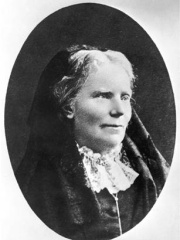
10. Elizabeth Blackwell (1821 - 1910)
With an HPI of 70.03, Elizabeth Blackwell is the 10th most famous British Physician. Her biography has been translated into 59 different languages.
Elizabeth Blackwell (3 February 1821 – 31 May 1910) was an English-American physician, notable as the first woman to earn a medical degree in the United States, and the first woman on the Medical Register of the General Medical Council for the United Kingdom. Blackwell played an important role in both the United States and the United Kingdom as a social reformer, and was a pioneer in promoting education for women in medicine. Her contributions remain celebrated with the Elizabeth Blackwell Medal, awarded annually to a woman who has made a significant contribution to the promotion of women in medicine. Blackwell was not initially interested in a career in medicine. She became a schoolteacher in order to support her family. This occupation was seen as suitable for women during the 1800s; however, she soon found it unsuitable for her. Blackwell's interest in medicine was sparked after a friend fell ill and remarked that, had a female doctor cared for her, she might not have suffered so much. Blackwell began applying to medical schools and immediately began to endure the prejudice against her sex that would persist throughout her career. She was rejected from each medical school she applied to, except Geneva Medical College in New York, in which the male students voted in favor of Blackwell's acceptance, albeit as a joke. Thus, in 1847, Blackwell became the first woman to attend medical school in the United States. Blackwell's inaugural thesis on typhoid fever, published in 1849 in the Buffalo Medical Journal and Monthly Review, shortly after she graduated, was the first medical article published by a female student from the United States. It portrayed a strong sense of empathy and sensitivity to human suffering, as well as strong advocacy for economic and social justice. This perspective was deemed by the medical community as feminine. Blackwell founded the New York Infirmary for Women and Children with her sister Emily Blackwell in 1857, and began giving lectures to female audiences on the importance of educating girls. She played a significant role during the American Civil War by organizing nurses, and the Infirmary developed a medical school program for women, providing substantial work with patients (clinical education). Returning to England, she helped found the London School of Medicine for Women in 1874.
People
Pantheon has 71 people classified as British physicians born between 1510 and 1977. Of these 71, 1 (1.41%) of them are still alive today. The most famous living British physicians include Vivek Murthy. The most famous deceased British physicians include Joseph Lister, Edward Jenner, and Edgar Adrian.
Living British Physicians
Go to all RankingsDeceased British Physicians
Go to all RankingsJoseph Lister
1827 - 1912
HPI: 81.46
Edward Jenner
1749 - 1823
HPI: 81.13
Edgar Adrian
1889 - 1977
HPI: 80.05
William Harvey
1578 - 1657
HPI: 79.40
Alan Hodgkin
1914 - 1998
HPI: 78.08
John Snow
1813 - 1858
HPI: 76.33
James Black
1924 - 2010
HPI: 75.70
Niels Kaj Jerne
1911 - 1994
HPI: 71.41
James Parkinson
1755 - 1824
HPI: 70.88
Elizabeth Blackwell
1821 - 1910
HPI: 70.03
Robert Knox
1791 - 1862
HPI: 67.22
Hans Sloane
1660 - 1753
HPI: 66.43
Overlapping Lives
Which Physicians were alive at the same time? This visualization shows the lifespans of the 25 most globally memorable Physicians since 1700.

